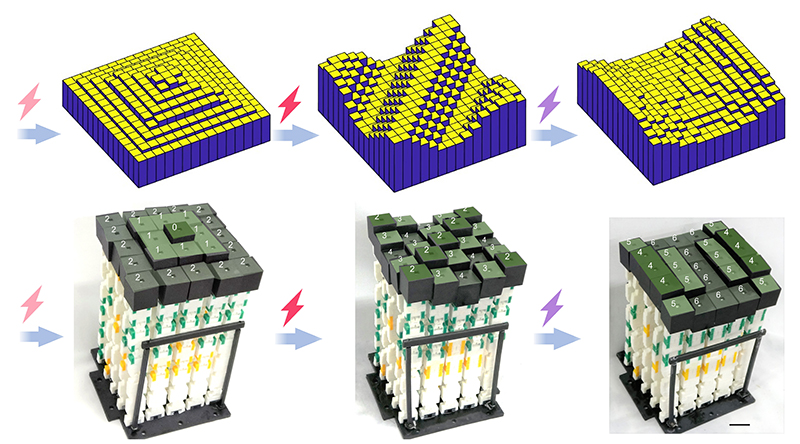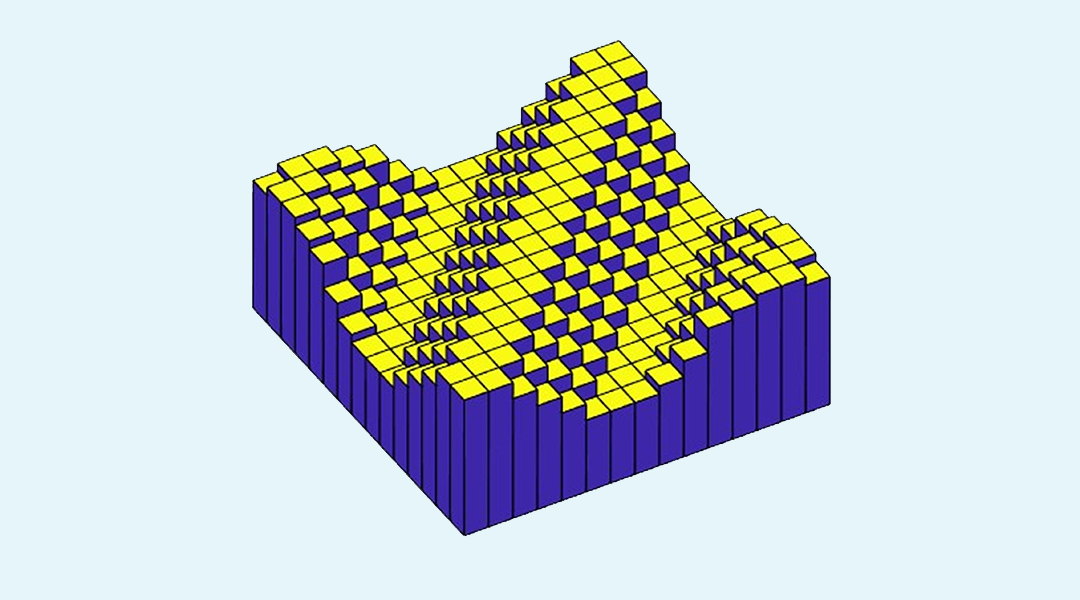If one day you decide to turn on a 20-year-old computer, you might find you can’t access the files anymore. Indeed, after a few years, hard drives become faulty as their moving parts start to wear out. Solid-state drives have no moving parts and are thus longer-lasting in theory, although, in practice they can also fail in different ways.
While modern solid state drives are getting more and more reliable, most of us resort to keeping multiple backups to protect our data from being lost. But a new study published in Advanced Science proposes a new way of storing data that is immune to degradation. As a bonus, the data is also protected against hackers.
The improved data storage is achieved thanks to mechanical metamaterials. These are a kind of material that, unlike any naturally occurring materials, responds to temperature changes by stretching and bending. “Mechanical metamaterials are going through a second youth,” said Daniel Ramos, researcher at the CSIC Materials Sciences Institute of Madrid, who was not involved in the research.
A grid of pixels
In the study, scientists combined three kinds of plastics as building blocks to obtain a square grid of “pixels” of different heights. The plastics they chose were actually metamaterials that change shape in very precise ways when exposed to heat. This way, the researchers could choose how to distribute the pixels and thus encode the desired information in the grid.
“Our computers and phones store information as 1s and 0s that are locked up inside the electronic properties of a silicon chip. Here, we store information in the structure of the material itself,” said Chang Qing Chen, corresponding author of the paper and professor at Tsinghua University in China.

A precise sequence of temperatures is required to decode the information hidden in the grid. If the wrong sequence is applied, the information is erased forever, meaning that if someone tries a random sequence in an attempt to hack the system, it is virtually impossible to succeed.
Thus, the level of security is much higher than that of our current computers’ hard drives. These are protected, for all practical purposes, as cracking the data by guessing codes at random would require several lifetimes even with billions of high-performing computers running all at once. However, it’s still true that enough guesses could in principle make it possible eventually to read out the hidden data.
“If a thief steals your USB flash drive and has the computational resources, the thief can eventually crack your encrypted data by trying code after code after code. With [this experiment], the data becomes irreversibly scrambled or erased the fist time a thief makes a bad guess,” said Guy Genin, co-author and professor of mechanical engineering at Washington University in St. Louis.
How to store more data
An added advantage is that, in principle, this grid of metamaterials can store a greater density of data per cubic centimeter than the systems we currently use. Mingchao Liu, also a co-author and researcher at the Nanyang Technological University in Singapore, thinks that they might even move beyond binary data (which all of our current computers are based on) and onto more complex types of digital data. “Because we do not use transistors, we are not limited to binary data (1s and 0s). We might eventually store digital information rather than just binary,” he said.
The main challenge ahead is making the whole setup much smaller. The current system is several centimeters long and stores very small volumes of data. “But it’s a proof of concept of a very interesting way of storing data in the future,” Ramos said.
The present study was limited by the resolution of the 3D printer that was used to generate the materials. But this resolution has dropped tenfold over the last couple of years, argued Chen. The researchers expect to be able to print finer and finer materials in the near- to mid-term future and hence store much larger volumes of data in a much smaller space.
“Memory chips at present store terabytes, but we are still in the kilobyte range. But just because we are way behind does not mean we cannot catch up,” Chen said.
Reference: Zhiqiang Meng et al., Encoding and Storage of Information in Mechanical Metamaterials, Advanced Science (2023). DOI: 10.1002/advs.202301581

















